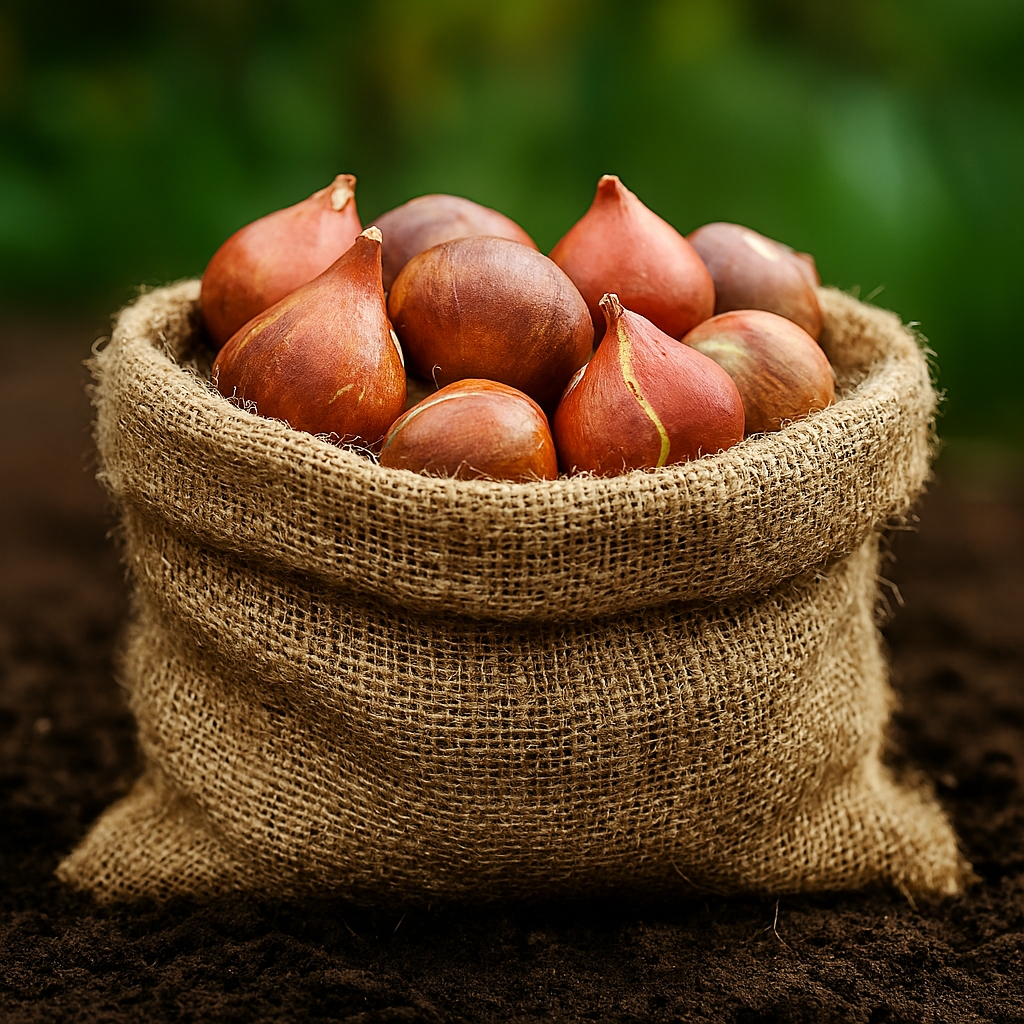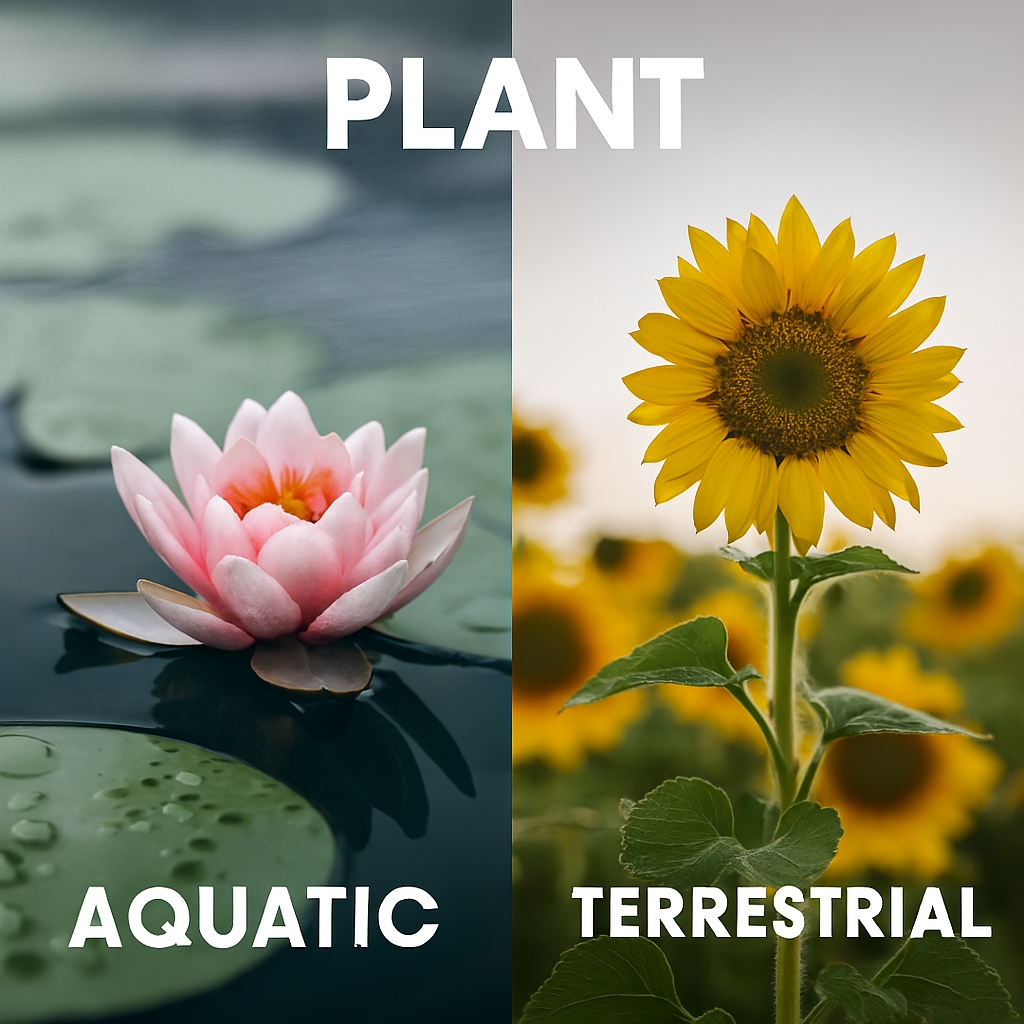Gravel And Small Stones
THE INVISIBLE FRAMEWORK OF LIFE
Gravel and small stones are more than geological leftovers. Scattered across deserts, forests, riverbeds, and gardens, these mineral fragments form the quiet infrastructure of ecological resilience. They stabilize soil, guide water, shelter life, and regulate temperature. Their presence influences everything from microbial activity to plant root behavior, from erosion control to carbon cycling. In a world increasingly shaped by climate extremes and land degradation, understanding the ecological role of gravel and stones is no longer optional—it’s essential.
SOIL STRUCTURE – STONES THAT HOLD THE EARTH TOGETHER
Gravel and small stones act as anchors within the soil matrix. Their irregular shapes interlock with finer particles, increasing friction and reducing the risk of landslides or erosion. In sloped or flood-prone areas, this structural reinforcement is critical. Stones also prevent compaction by creating air pockets, which allow roots and organisms to breathe. Their presence enhances the soil’s ability to bear weight, making them essential in both natural and agricultural systems. Without them, soils can collapse under pressure, wash away in storms, or become impermeable to water and roots.
Soil Stability Table
| Property | Ecological Function |
|---|---|
| Angularity | Increases soil cohesion |
| Size Variation | Enhances structural layering |
| Density | Improves load-bearing capacity |
| Surface Texture | Boosts friction and grip |
| Distribution Depth | Influences erosion resistance |
WATER FLOW – NATURAL CHANNELS IN STONE MATRICES
Gravel creates porous networks that guide water through soil. These channels allow rain to infiltrate rather than run off, reducing erosion and recharging groundwater. In sandy soils, where water drains too quickly, stones slow the flow, improving moisture retention. In clay-heavy soils, they break up dense layers, enhancing permeability. This dual function—drainage and retention—makes gravel indispensable in both arid and flood-prone regions. It also supports the formation of aquifers and wetland systems by directing water to deeper layers.
Hydrological Function Table
| Stone Role | Water Impact |
|---|---|
| Percolation Pathways | Enhances infiltration |
| Drainage Channels | Prevents waterlogging |
| Moisture Buffering | Stabilizes soil hydration |
| Aquifer Recharge | Supports groundwater levels |
| Erosion Control | Reduces surface runoff |
MICROBIAL HABITATS – STONES AS MICROCLIMATE ZONES
Beneath and between stones, microhabitats flourish. These zones offer shade, moisture retention, and temperature buffering, ideal for microbial colonies. Bacteria and fungi thrive in these protected niches, accelerating decomposition and nutrient cycling. Stones also harbor biofilms that contribute to soil fertility. Their mineral surfaces interact chemically with organic matter, fostering symbiotic relationships that sustain plant life.
Microbial Interaction Table
| Stone Feature | Microbial Benefit |
|---|---|
| Surface Area | Supports biofilm formation |
| Thermal Buffering | Stabilizes microbial activity |
| Moisture Retention | Prevents desiccation |
| Mineral Composition | Influences microbial diversity |
| Shelter Zones | Protects against UV exposure |
PLANT ROOT ARCHITECTURE – GUIDING GROWTH THROUGH STONE ARRAYS
Roots navigate around stones, adapting their architecture to the physical landscape. This interaction strengthens root systems, promoting deeper anchorage and resilience against drought. Stones also concentrate nutrients in their vicinity, attracting root proliferation. In compacted soils, gravel breaks up hardpan layers, allowing roots to penetrate and access deeper water reserves. The mechanical resistance offered by stones triggers hormonal responses in plants, enhancing growth and stress tolerance.
Root-Stone Interaction Table
| Stone Influence | Root Response |
|---|---|
| Physical Barrier | Stimulates lateral growth |
| Nutrient Concentration | Encourages root clustering |
| Moisture Gradient | Guides root direction |
| Hardpan Disruption | Enables deeper penetration |
| Hormonal Trigger | Enhances stress adaptation |
TEMPERATURE MODULATION – STONES AS THERMAL REGULATORS
Gravel and stones absorb and release heat in ways that stabilize soil temperature. During the day, they capture solar radiation, storing it within their mass. At night, they release this heat gradually, buffering against sudden drops in temperature. This thermal inertia protects plant roots and microbial colonies from frost damage and overheating. In desert ecosystems, stones reduce surface evaporation by shading the soil, preserving moisture for longer periods. Their influence extends to seasonal transitions, where they moderate freeze-thaw cycles that can otherwise disrupt root systems and soil structure.
In agricultural settings, gravel mulches are used to regulate root zone temperatures, especially in vineyards and orchards. These mulches prevent thermal shock and extend the growing season by maintaining consistent warmth. In alpine environments, stones insulate the ground, allowing cold-tolerant species to survive in otherwise inhospitable conditions. Their role in temperature regulation is subtle but vital, especially as climate variability increases.
Thermal Regulation Table
| Stone Property | Temperature Effect |
|---|---|
| Heat Absorption | Warms soil during cold spells |
| Radiative Cooling | Prevents overheating |
| Shade Provision | Reduces evaporation |
| Frost Buffering | Minimizes freeze damage |
| Seasonal Stability | Supports perennial growth |
BIODIVERSITY SUPPORT – STONES AS REFUGES AND NESTING SITES
Gravel and small stones create microhabitats that support a wide range of organisms. Insects, amphibians, reptiles, and small mammals use stone crevices for shelter, nesting, and thermoregulation. These microhabitats offer protection from predators, extreme weather, and human disturbance. In aquatic environments, gravel beds serve as spawning grounds for fish and invertebrates, providing oxygenated water and stable substrates for egg attachment.
The diversity of stone shapes and sizes fosters ecological niches, increasing species richness. Stones also act as stepping stones for plant colonization, anchoring seeds and stabilizing young shoots. In restoration projects, gravel is used to recreate lost habitats, supporting the return of native species. Their ecological value lies not in their size but in their ability to create complexity and refuge within otherwise uniform landscapes.
Habitat Creation Table
| Stone Role | Biodiversity Impact |
|---|---|
| Shelter Crevices | Protects small fauna |
| Nesting Substrate | Supports reproduction |
| Aquatic Spawning | Enables fish lifecycle stages |
| Seed Anchoring | Facilitates plant establishment |
| Niche Formation | Increases species diversity |

CARBON SEQUESTRATION – INDIRECT ROLES IN CLIMATE MITIGATION
While gravel and stones do not sequester carbon directly, they influence processes that do. By stabilizing soil and promoting vegetation, they enhance organic carbon storage. Their role in microbial activity accelerates decomposition and humus formation. Gravel also reduces erosion, preventing carbon-rich topsoil loss. In riparian zones, stones slow water flow, allowing sediment deposition and carbon accumulation.
In agroforestry systems, gravel is used to support perennial plants that act as carbon sinks. Their presence also reduces the need for tilling, which can release stored carbon into the atmosphere. By creating conditions that favor long-term biomass accumulation and soil integrity, stones contribute indirectly to climate mitigation strategies.
Carbon Dynamics Table
| Stone Function | Carbon Effect |
|---|---|
| Soil Stabilization | Preserves organic matter |
| Vegetation Support | Enhances biomass accumulation |
| Microbial Activation | Boosts humus formation |
| Erosion Reduction | Retains carbon-rich layers |
| Sediment Capture | Facilitates carbon deposition |
AGRICULTURAL BENEFITS – STONES IN FARMING SYSTEMS
Farmers use gravel to improve soil drainage, reduce compaction, and manage erosion. In permaculture, stones are integrated into swales and berms to direct water flow. Gravel paths prevent weed growth and support machinery movement. In orchards, stones regulate root temperature and moisture. Their presence also deters pests by disrupting habitat continuity.
Gravel is often used in raised beds to improve aeration and prevent waterlogging. In dryland farming, stones are arranged to capture dew and channel it toward crops. Their role in sustainable agriculture is expanding, especially in regions facing water scarcity and soil degradation. By enhancing physical structure and ecological function, stones become silent allies in food production.
Agricultural Use Table
| Application | Benefit |
|---|---|
| Drainage Enhancement | Prevents root rot |
| Erosion Control | Protects crop beds |
| Pathway Stabilization | Supports farm logistics |
| Thermal Buffering | Regulates root zones |
| Pest Deterrence | Disrupts pest migration |
URBAN LANDSCAPES – STONES IN GREEN INFRASTRUCTURE
Gravel is central to urban green design. It supports permeable pavements, bioswales, and rain gardens. These systems reduce stormwater runoff and filter pollutants. Stones also enhance aesthetic appeal while serving functional roles in drainage and temperature control. In rooftop gardens, gravel layers prevent soil erosion and improve insulation.
Urban planners use gravel to create low-maintenance green spaces that support biodiversity and water management. In community gardens, gravel paths allow access without compacting soil. Their role in urban ecology is both practical and symbolic—bringing nature into built environments while solving infrastructure challenges.
Urban Ecology Table
| Stone Use | Urban Benefit |
|---|---|
| Permeable Pavement | Reduces flooding |
| Bioswale Substrate | Filters contaminants |
| Rain Garden Base | Enhances infiltration |
| Rooftop Insulation | Moderates building temperature |
| Visual Integration | Adds landscape texture |
COASTAL DEFENSE – STONES IN SHORELINE PROTECTION
Gravel and stones buffer coastlines against wave action and erosion. They form natural breakwaters and stabilize dunes. In restoration projects, gravel beds are used to rebuild marshes and estuaries. These structures absorb wave energy and trap sediments, supporting wetland regeneration. Stones also provide habitat for intertidal species.
Their role in coastal resilience is increasingly recognized in climate adaptation strategies. By reducing erosion and supporting biodiversity, stones help maintain the ecological integrity of shorelines. In engineered systems, gravel is used in gabions and revetments to reinforce vulnerable areas. Their simplicity belies their effectiveness in protecting life and land.
Coastal Function Table
| Stone Role | Shoreline Impact |
|---|---|
| Wave Dissipation | Reduces erosion |
| Dune Stabilization | Prevents sand loss |
| Marsh Restoration | Supports wetland recovery |
| Sediment Trapping | Builds coastal resilience |
| Intertidal Habitat | Sustains marine biodiversity |
DESERT ECOSYSTEMS – STONES IN ARID ADAPTATION
In deserts, stones reduce soil temperature and evaporation. They create microclimates that support plant germination and microbial life. Gravel mulches are used to conserve water and suppress weeds. Stones also influence wind patterns, reducing sand drift and protecting fragile vegetation. Their role in desert restoration is increasingly recognized in climate adaptation strategies.
In traditional desert agriculture, stones are arranged to harvest dew and channel it toward crops. These techniques, known as lithic mulching, have been used for centuries to grow food in arid zones. Stones also support the survival of desert reptiles and insects by offering shade and thermal refuge. Their ecological function is subtle but essential in extreme environments.
Desert Adaptation Table
| Stone Function | Arid Zone Benefit |
|---|---|
| Evaporation Control | Conserves moisture |
| Microclimate Creation | Supports germination |
| Wind Buffering | Prevents sand erosion |
| Gravel Mulching | Enhances soil fertility |
| Restoration Support | Enables desert agriculture |
EROSION CONTROL – STONES AS NATURAL DEFENSES AGAINST LAND LOSS
Gravel and small stones act as buffers against erosive forces. On hillsides, they slow down water flow, reducing the kinetic energy that dislodges soil particles. In riverbanks and floodplains, stones stabilize sediment layers, preventing washouts during heavy rains. Their presence reduces splash erosion caused by raindrops and shields vulnerable topsoil from wind displacement.
In agricultural zones, gravel is used to reinforce terraces and contour lines, preserving soil fertility. In forested areas, stones help retain leaf litter and organic matter, which further protects the soil. Their role in erosion control is especially critical in regions facing deforestation, overgrazing, or rapid urban expansion.
Erosion Control Table
| Stone Function | Protective Outcome |
|---|---|
| Flow Resistance | Slows water velocity |
| Sediment Anchoring | Prevents soil displacement |
| Splash Reduction | Shields topsoil from raindrops |
| Wind Buffering | Minimizes airborne erosion |
| Contour Stabilization | Preserves agricultural terraces |
SEED DISPERSAL – STONES AS LANDING SITES AND GERMINATION AIDS
Gravel surfaces influence seed dispersal and germination. Their uneven texture traps wind-blown seeds, preventing them from being carried away. In rain events, stones redirect water to low points where seeds accumulate and germinate. The microclimates beneath stones offer shade and moisture, ideal for early root development.
Some plants have evolved to use stones as part of their reproductive strategy. Seeds may lodge in crevices or use the thermal buffering of stones to time their emergence. In restoration projects, gravel is used to stabilize seedbeds and reduce predation. These interactions reveal how stones shape the very beginning of plant life.
Seed Dynamics Table
| Stone Role | Germination Impact |
|---|---|
| Surface Texture | Traps and holds seeds |
| Water Redirection | Guides moisture to seed zones |
| Thermal Buffering | Times seed emergence |
| Crevice Anchoring | Protects early root growth |
| Predator Shielding | Reduces seed loss |
SYMBOLIC VALUE – STONES IN CULTURAL ECOLOGY
Beyond their physical roles, stones carry symbolic weight in ecological storytelling. They represent permanence, resilience, and the passage of time. Indigenous cultures often use stones in rituals, land markers, and ecological memory. In environmental education, gravel paths and stone circles invite reflection and connection to the land.
Stones also serve as metaphors in ecological design—reminding us that small, overlooked elements can hold entire systems together. Their presence in art, architecture, and landscape design bridges the gap between science and emotion. In this way, gravel and stones become not just tools of ecology, but symbols of continuity and care.
Symbolic Ecology Table
| Cultural Use | Ecological Resonance |
|---|---|
| Ritual Placement | Honors land cycles |
| Memory Markers | Preserves ecological history |
| Reflective Spaces | Encourages environmental empathy |
| Design Metaphors | Embeds resilience in form |
| Educational Tools | Teaches system interdependence |
FLOOD MITIGATION – STONES AS NATURAL BRAKES IN WATER SYSTEMS
Gravel and stones slow down floodwaters by increasing surface roughness and creating friction. In natural floodplains, stone beds disperse water energy, reducing destructive force and allowing sediment to settle. In urban settings, gravel-filled trenches and bioswales absorb excess rainwater, preventing flash floods and sewer overflow. Their porous structure allows water to infiltrate gradually, reducing peak flow rates and protecting infrastructure.
In riparian restoration, stones are used to reinforce streambanks and redirect flow away from vulnerable zones. Their role in flood mitigation is especially valuable in areas experiencing more intense rainfall due to climate shifts.
Flood Control Table
| Stone Feature | Mitigation Effect |
|---|---|
| Surface Roughness | Slows water velocity |
| Porous Structure | Enhances infiltration |
| Energy Dispersion | Reduces flood impact |
| Bank Reinforcement | Prevents erosion |
| Flow Diversion | Protects infrastructure |
POLLUTANT FILTRATION – STONES AS NATURAL PURIFIERS
Gravel acts as a passive filtration system in both terrestrial and aquatic environments. As water passes through stone layers, suspended particles and contaminants are trapped. This process reduces turbidity and improves water quality. In constructed wetlands, gravel supports microbial biofilms that break down organic pollutants and neutralize toxins.
In stormwater systems, gravel filters out heavy metals, oils, and sediments before they reach rivers or oceans. Their filtration capacity depends on size, mineral composition, and arrangement. By mimicking natural filtration zones, gravel helps restore ecological balance in polluted landscapes.
Filtration Function Table
| Stone Role | Purification Outcome |
|---|---|
| Particle Trapping | Reduces turbidity |
| Biofilm Support | Breaks down organic waste |
| Mineral Interaction | Neutralizes chemical pollutants |
| Flow Regulation | Extends contact time |
| Sediment Capture | Prevents downstream pollution |

PATHWAY FORMATION – STONES IN HUMAN AND ANIMAL MOVEMENT
Gravel paths guide movement across landscapes without disturbing soil structure. For humans, they offer durable, low-maintenance walkways that resist erosion and compaction. For animals, stone trails become migration corridors, especially in fragmented habitats. These paths also influence seed dispersal and nutrient flow, acting as ecological connectors.
In conservation design, gravel is used to create access routes that minimize ecological disruption. Their texture discourages off-trail wandering, protecting sensitive zones. Stones thus serve both functional and ecological roles in shaping movement through space.
Pathway Dynamics Table
| Stone Use | Movement Impact |
|---|---|
| Trail Stabilization | Prevents soil compaction |
| Migration Corridors | Supports wildlife movement |
| Seed Distribution | Enhances dispersal patterns |
| Erosion Resistance | Maintains trail integrity |
| Habitat Connectivity | Links fragmented ecosystems |
NOISE REDUCTION – STONES AS ACOUSTIC BUFFERS
Gravel surfaces absorb sound waves, reducing noise pollution in urban and natural environments. Their irregular shapes and porous arrangement scatter sound energy, preventing reflection and amplification. In green infrastructure, gravel is used around buildings and roads to dampen traffic and industrial noise.
In wildlife habitats, reduced noise levels support animal communication and reduce stress. Gravel buffers also enhance acoustic privacy in public parks and residential areas. Their role in sound management is often overlooked but contributes to both ecological health and human well-being.
Acoustic Buffer Table
| Stone Feature | Noise Reduction Effect |
|---|---|
| Irregular Texture | Scatters sound waves |
| Porous Arrangement | Absorbs acoustic energy |
| Surface Complexity | Prevents echo formation |
| Vegetation Pairing | Enhances sound dampening |
| Habitat Protection | Preserves animal communication |
FIRE RESILIENCE – STONES AS BARRIERS AND HEAT SINKS
Gravel and stones do not burn, making them effective firebreaks in wildfire-prone regions. They create non-flammable zones that slow the spread of fire and protect vegetation. In landscaping, gravel is used around buildings to reduce fuel load and prevent ember ignition.
Stones also absorb heat, reducing surface temperatures and creating safe zones for wildlife during fire events. Their placement in fire-prone ecosystems is part of adaptive land management strategies. By interrupting fuel continuity, stones contribute to fire resilience and recovery.
Fire Management Table
| Stone Role | Fire Resilience Benefit |
|---|---|
| Non-Flammable Barrier | Stops fire spread |
| Heat Absorption | Lowers surface temperature |
| Ember Shielding | Prevents ignition |
| Fuel Disruption | Reduces burn intensity |
| Recovery Support | Creates post-fire refuges |
MINERAL CYCLING – STONES AS SLOW-RELEASE SOURCES
Over time, stones weather and release minerals into the soil. This slow-release process enriches soil with essential nutrients like calcium, magnesium, and potassium. These minerals support plant growth, microbial activity, and overall soil fertility. Unlike synthetic fertilizers, stone-derived nutrients are gradual and sustainable.
In regenerative agriculture, crushed stone is used to remineralize depleted soils. This practice restores nutrient balance and improves crop resilience. Gravel also buffers pH levels, creating stable conditions for diverse organisms. Their role in mineral cycling is foundational to long-term soil health.
Mineral Release Table
| Stone Composition | Nutrient Contribution |
|---|---|
| Basalt | Magnesium, iron |
| Limestone | Calcium, pH buffering |
| Granite | Potassium, trace elements |
| Sandstone | Silica, structural support |
| Phosphate Rock | Phosphorus enrichment |
LIGHT REFLECTION – STONES IN SOLAR DYNAMICS
Light-colored gravel reflects sunlight, influencing microclimates and energy balance. In hot regions, reflective stones reduce surface heat, lowering ambient temperatures. In cold zones, darker stones absorb heat, warming soil and extending growing seasons. This albedo effect shapes plant distribution and soil moisture dynamics.
In urban design, gravel is used to manage heat islands and improve energy efficiency. Reflective stones around buildings reduce cooling costs, while absorptive stones support passive heating. Their role in solar dynamics connects geology with climate-responsive design.
Solar Interaction Table
| Stone Color | Light Effect |
|---|---|
| White Gravel | Reflects sunlight |
| Dark Basalt | Absorbs heat |
| Mixed Aggregates | Balances temperature |
| Surface Texture | Influences albedo |
| Placement Strategy | Modulates microclimate |
EDUCATIONAL VALUE – STONES IN ECOLOGICAL LEARNING
Gravel and stones offer tactile, visual, and symbolic tools for ecological education. Their presence in school gardens, nature trails, and outdoor classrooms invites inquiry into geology, biology, and climate. Children learn about erosion, water flow, and biodiversity by observing stone interactions.
In citizen science, gravel beds are used to monitor water quality, insect populations, and plant succession. Stones also serve as metaphors in storytelling, linking ecological concepts to emotional understanding. Their educational value lies in their accessibility and ability to connect learners to living systems.
Learning Applications Table
| Educational Use | Learning Outcome |
|---|---|
| Nature Trails | Teaches erosion and flow |
| School Gardens | Demonstrates soil structure |
| Citizen Science | Supports ecological monitoring |
| Storytelling Tools | Builds symbolic literacy |
| Sensory Engagement | Enhances experiential learning |
CONCLUSION – THE QUIET POWER OF MINERAL FRAGMENTS
Gravel and small stones are not passive elements in the landscape. They are active participants in ecological balance, shaping everything from water flow to microbial life, from plant resilience to climate adaptation. Their roles are subtle, often invisible, yet foundational. In a time when ecosystems face unprecedented stress, these mineral fragments offer stability, complexity, and continuity.
Understanding their function allows us to design better farms, cities, and restoration projects. It also invites a shift in perspective—where even the smallest stone is seen as a builder of life. Whether scattered across a desert plain or embedded in a forest floor, gravel and stones remain the hidden architects of Earth’s ecology.
JOIN THE DISCUSSION – WHAT STONES MEAN TO YOU
Have you noticed how gravel shapes your garden, your neighborhood, or your local park? Do stones play a role in your ecological work, your cultural heritage, or your creative practice?
#GravelEcology #StoneFunction #MicrohabitatDesign #SoilStructureMatters #WaterFlowSystems #ClimateResilience #EcologicalSymbolism #UrbanGreenInfrastructure #DesertRestoration #SeedAndStone #ErosionControl #CarbonCycleSupport #RootArchitecture #BiodiversityRefuge #HiddenArchitectsOfEarth













The Quiet Power Of Ikebana Flower Arrangements
[…] is not just about flowers—it’s about relationship. With nature, with space, with self. I don’t control the materials—I collaborate with them. A branch has its own logic. A flower […]